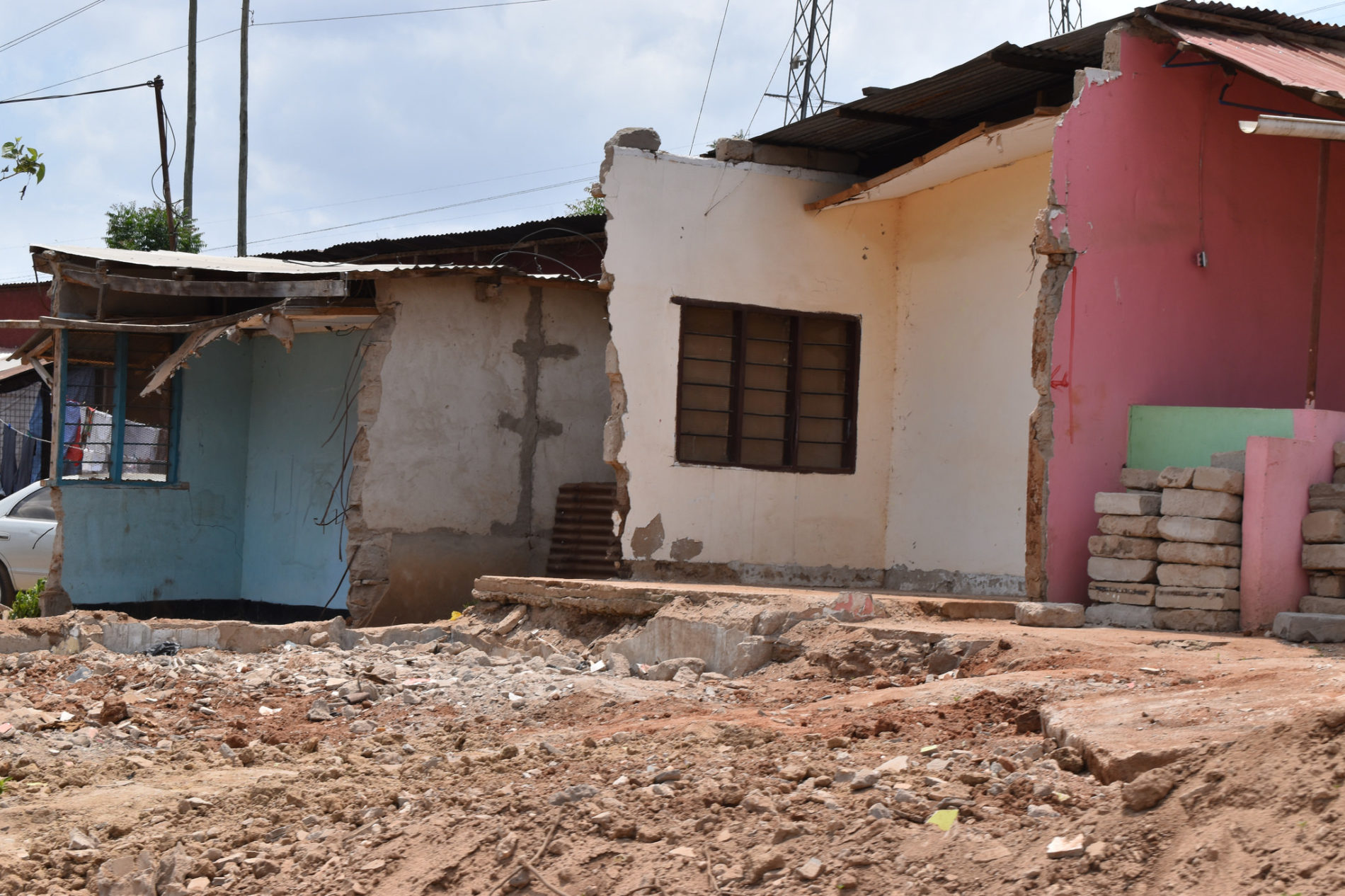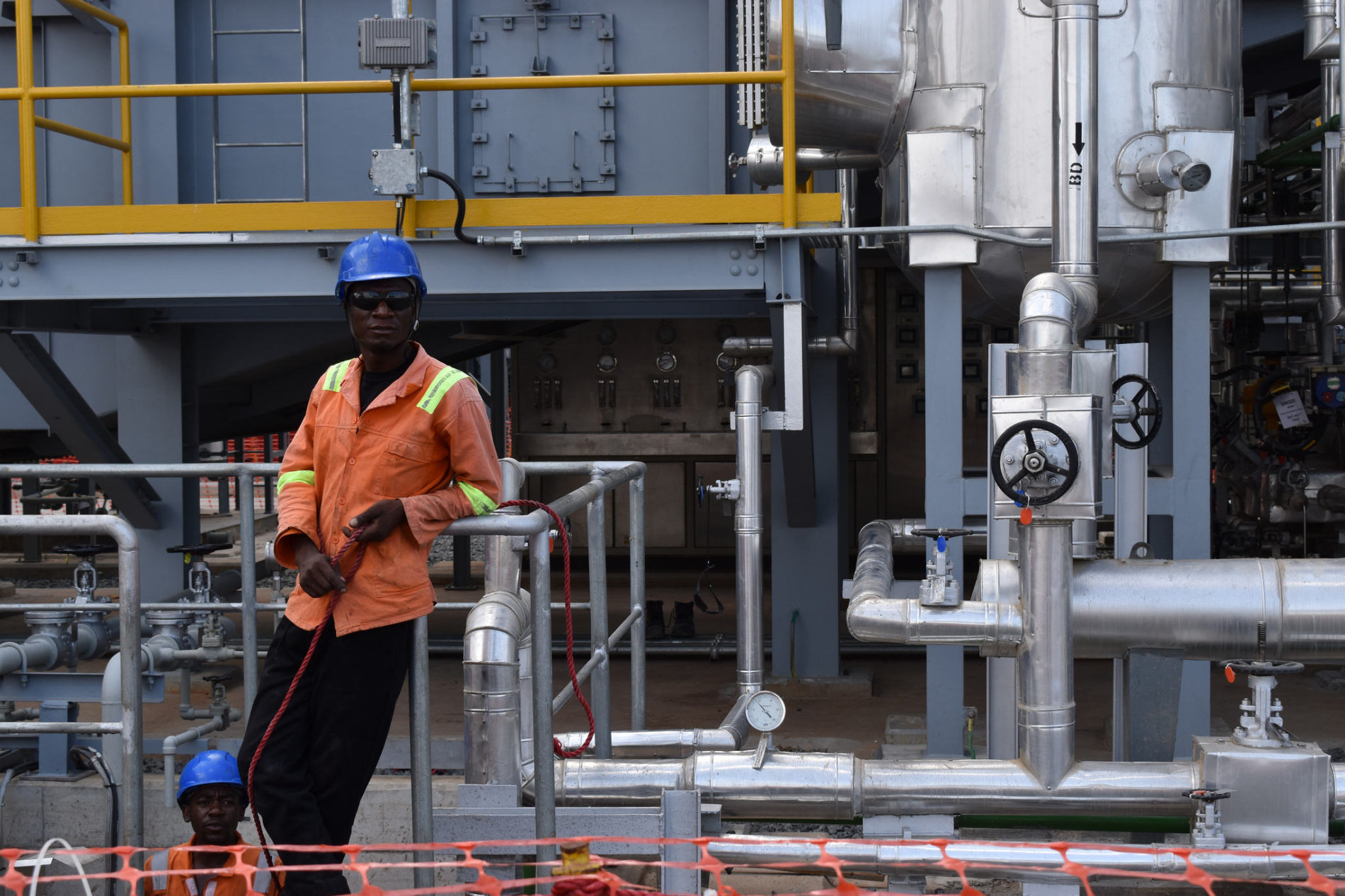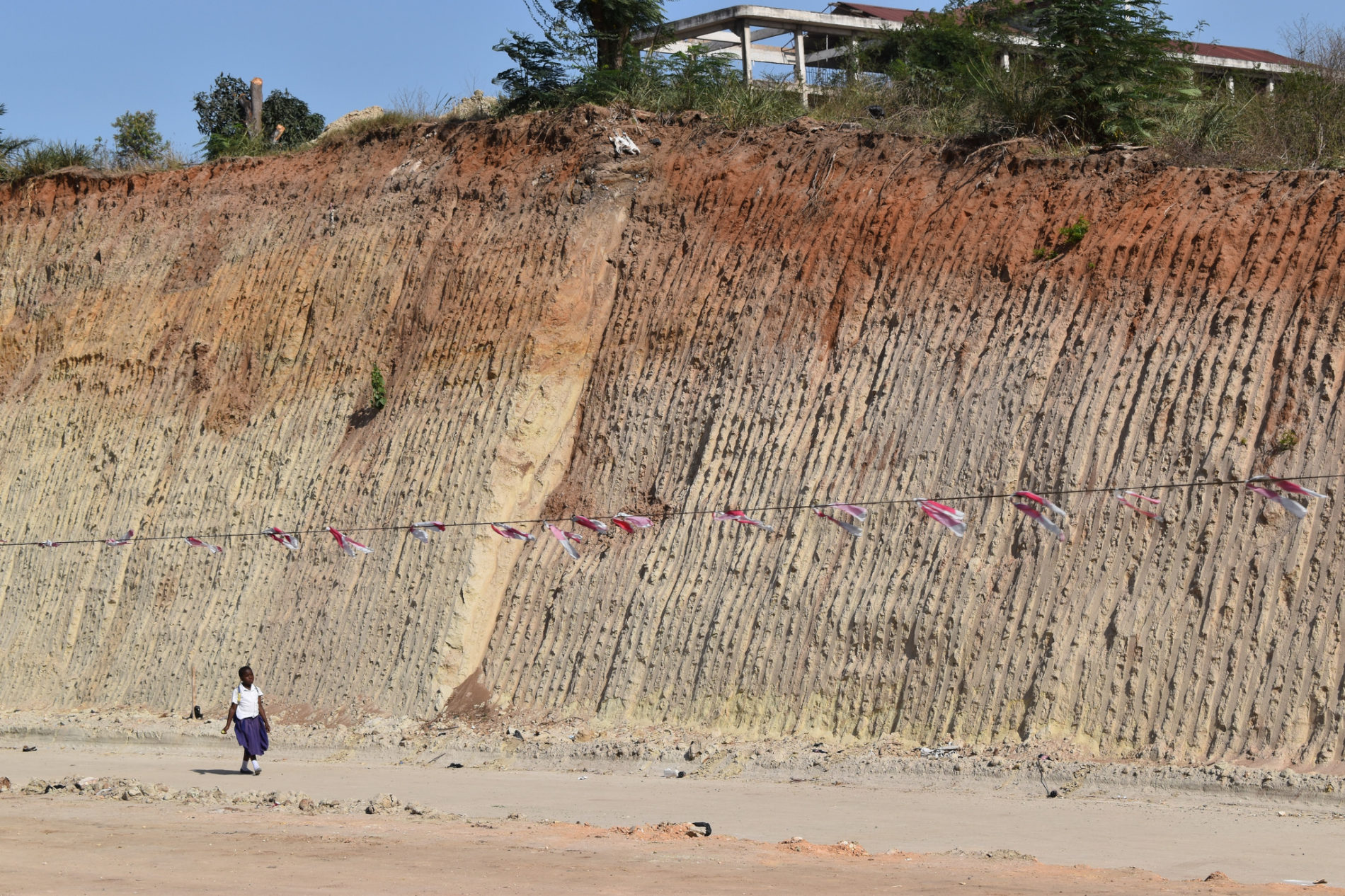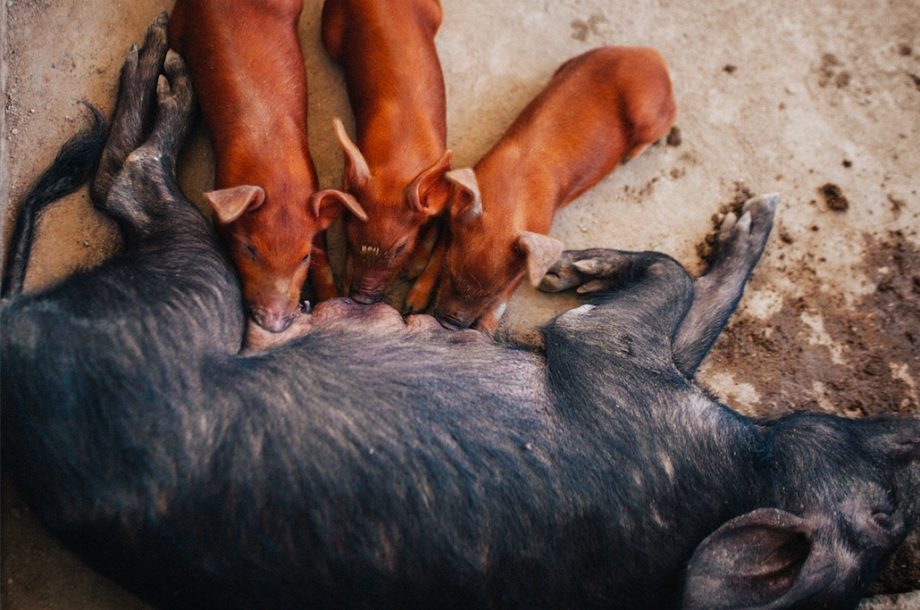This fall, Tanzania’s largest power plant came online. Rising about the outskirts of Dar Es Salaam, the nation’s largest city, Kinyerezi II reflects the ambitious scale of development in East Africa – and more generally, East Africa’s infrastructure boom.
The 240 megawatt thermal plant utilizes efficient combined-cycle technology and will eventually increase energy capacity in Tanzania by almost 15 percent. Entrepreneurs and investors, who face occasional business bottlenecks in the country’s unreliable power grid, will soon have something to celebrate.

A WORKER RESTS AT THE KINYEREZI II NATURAL GAS POWER PLANT ON THE OUTSKIRTS OF DAR ES SALAAM, TANZANIA PHOTO CREDIT: ANDREW BOGRAND/OXFAM
Yet burning questions remain. Building power plants from the future comes with a cost, one that developing countries might find unaffordable. Eighty-five percent of the $355 million price tag for Kinyerezi II was financed through debt.
The social and environmental ramifications are steep, too. To make room for urban development in the region that would eventually host Kinyerezi II, poor farmers were allegedly displaced without adequate compensation for their land. There is no doubt that Africa must play catch-up when it comes to energy and infrastructure, but are the costs sustainable?

IN THE PHOTO: HOMES CUT IN HALF TO MAKE WAY FOR INFRASTRUCTURE DEVELOPMENT IN THE KIMARA WARD OF DAR ES SALAAM, TANZANIA. PHOTO CREDIT: ANDREW BOGRAND/OXFAM
When it comes to those that live and work in the shadow of these super projects, the jury is still out. In the Kimara ward of Dar Es Salaam, adjacent to Kinyerezi II, developers recently raised over 1,000 buildings as part of a highway expansion. Rumors around the project, including alleged human rights abuses, are swirling. While construction continues, the demolition and resettlement process is dramatic.
In some cases, homes are literally left cut in half, rather than fully demolished, a testament to the frenetic pace of construction. To their credit, the government is cutting commute times in the sprawling metropolis and, regardless, they claim the structures in question were built illegally.
Challenges like these will continue to mount as mega projects increase across the continent. Africa is in the middle of a construction boom, owing in part to increasing political stability as well as to a rise in foreign investment.
The countries of East Africa, including Tanzania, are leading the way, fueled by recent oil and gas discoveries. The region witnessed over 130 mega construction projects valued at $50 million or more in 2018 alone, double the volume from the year previous. The breakneck pace shows no sign of stalling, especially not as world powers push for a bigger piece of Africa.
It might be time to slow the roll, however, if only to ask the right questions. Growth is good, but not if it benefits foreign governments, corrupt elites and expatriate companies at the expense of national coffers or local livelihoods.
Overleveraged projects that are built without consent or compensation bring major risks for impacted communities as well as host governments, investors and operating companies.

IN THE PHOTO: WORKERS AT THE KINYEREZI II NATURAL GAS POWER PLANT ON THE OUTSKIRTS OF DAR ES SALAAM, TANZANIA. PHOTO CREDIT: ANDREW BOGRAND/OXFAM
This summer, frustration with lagging benefits from oil extraction in Turkana, a rural county in northwest Kenya, led to protests that shutdown oil production for weeks and cost the country over $100,000 per day. To make matters worse, environmentalists and activists in Kenya allege that they have been silenced in the government’s push for petroleum, power and ports.
Asking about who benefits from these projects, and how, should not land you in jail.
A free and informed dialogue can quash rumors, sunlight corruption or poor financing, and keep investment, and tax money, flowing. Slowing down and building the space for effective environmental audits and community engagement is critical. According to Bill Powers, chief engineer with E-Tech International, “when it comes to pipeline development and other infrastructure construction, moving too fast is always the biggest risk.”
Much of the legwork must come before projects even break ground. Slotted for construction this summer, the pending East Africa Crude Oil Pipeline (EACOP) between Uganda and Tanzania presents an opportunity for countries and communities to benefit from the regional energy bonanza. However, at almost 10 times the cost of Kinyerezi II, a similar debt structure and a pipeline route that takes it through diverse bioregions and isolated villages, the project has all of the risks associated with other energy ventures in the region, if not more.
Still, there is space.
The EACOP consortium, led by French energy giant Total, has not finalized its investment decision, meaning the intricacies of the deal are still open to negotiation. Host governments might have a chance to negotiate a deal with a sustainable debt load and ensure a fairer shake for resettled communities.

IN THE PHOTO: A GIRL WALKS ALONG A SPACE CLEARED FOR THE MOROGORO HIGHWAY EXPANSION IN THE KIMARA WARD OF DAR ES SALAAM, TANZANIA. PHOTO CREDIT: ANDREW BOGRAND/OXFAM
This is particularly important for women and minorities, who are more often exposed to the risks, rather than the rewards, of infrastructure development. “I believe EACOP will transform my community,” explains a female entrepreneur from Chongoleani near Tanga (name withheld), “but big projects like this can also destroy the social fabric.” She hopes the pipeline will create long-term jobs for her sons and provide clean drinking water for her family.
At a minimum, the EACOP consortium should publicly release its social and environmental impact assessment, provide enough time for citizens to digest the findings and solicit feedback on how the project should move forward, if at all. Total committed to doing as much this fall at an EACOP stakeholder summit in Dar Es Salaam, hosted by Oxfam in Tanzania. To avoid conflicts like the one in Turkana, communities need time and resources to ask the right questions and make informed decisions.
Expensive, ambitious mega projects like Kinyerezi II and EACOP are already reshaping East Africa. The breakneck pace is only going to increase. Whether or not the boom will be for the better depends on the willingness of governments, companies and investors to slow down and listen to those who have the most to lose—who, we are told, also have the most to gain.
EDITOR’S NOTE: THE OPINIONS EXPRESSED HERE BY IMPAKTER.COM COLUMNISTS ARE THEIR OWN, NOT THOSE OF IMPAKTER.COM FEATURED IMAGE CREDIT: OXFAM










